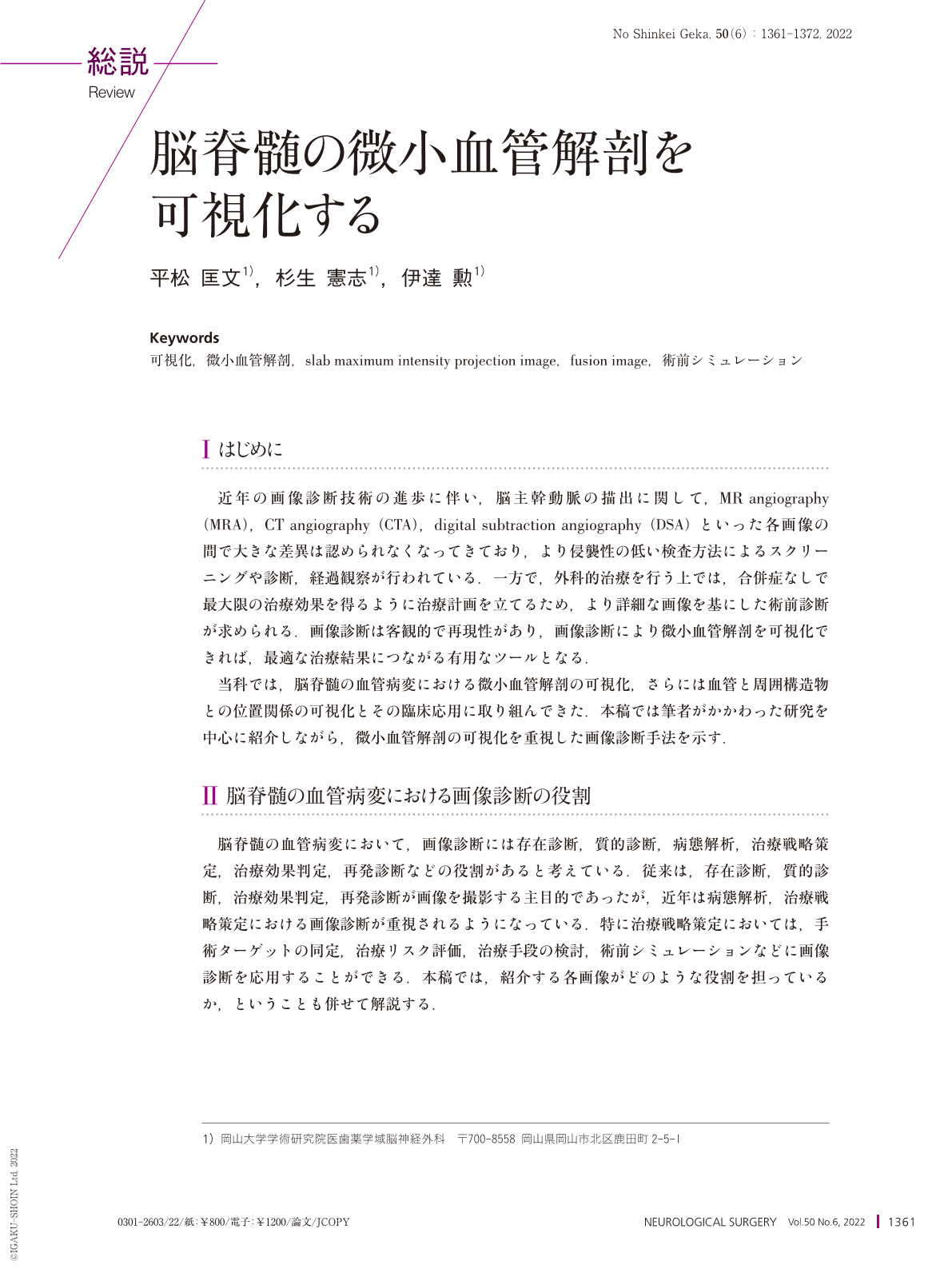Japanese
English
- 有料閲覧
- Abstract 文献概要
- 1ページ目 Look Inside
- 参考文献 Reference
Ⅰ はじめに
近年の画像診断技術の進歩に伴い,脳主幹動脈の描出に関して,MR angiography(MRA),CT angiography(CTA),digital subtraction angiography(DSA)といった各画像の間で大きな差異は認められなくなってきており,より侵襲性の低い検査方法によるスクリーニングや診断,経過観察が行われている.一方で,外科的治療を行う上では,合併症なしで最大限の治療効果を得るように治療計画を立てるため,より詳細な画像を基にした術前診断が求められる.画像診断は客観的で再現性があり,画像診断により微小血管解剖を可視化できれば,最適な治療結果につながる有用なツールとなる.
当科では,脳脊髄の血管病変における微小血管解剖の可視化,さらには血管と周囲構造物との位置関係の可視化とその臨床応用に取り組んできた.本稿では筆者がかかわった研究を中心に紹介しながら,微小血管解剖の可視化を重視した画像診断手法を示す.
Researchers have been trying to visualize fine angioarchitecture in cerebrospinal vascular lesions and the positional relationship between vascular lesions and surrounding structures. The aim of this article was to introduce the usefulness of imaging in visualizing the microvascular anatomy in cerebrospinal vascular lesions, such as aneurysm, arterial dissection, arteriovenous malformation, dural arteriovenous fistula(AVF), spinal dural and epidural AVF, and craniocervical junction AVF. For the imaging modality, we used high-resolution magnetic resonance imaging, three-dimensional rotational angiography(3D-RA), slab maximum intensity projection image from 3D-RA, cone-beam computed tomography, and fusion imaging. If fully exploited, imaging can contribute to clinical analysis and surgical treatment and be an essential tool for achieving maximum therapeutic effect without complications.

Copyright © 2022, Igaku-Shoin Ltd. All rights reserved.


